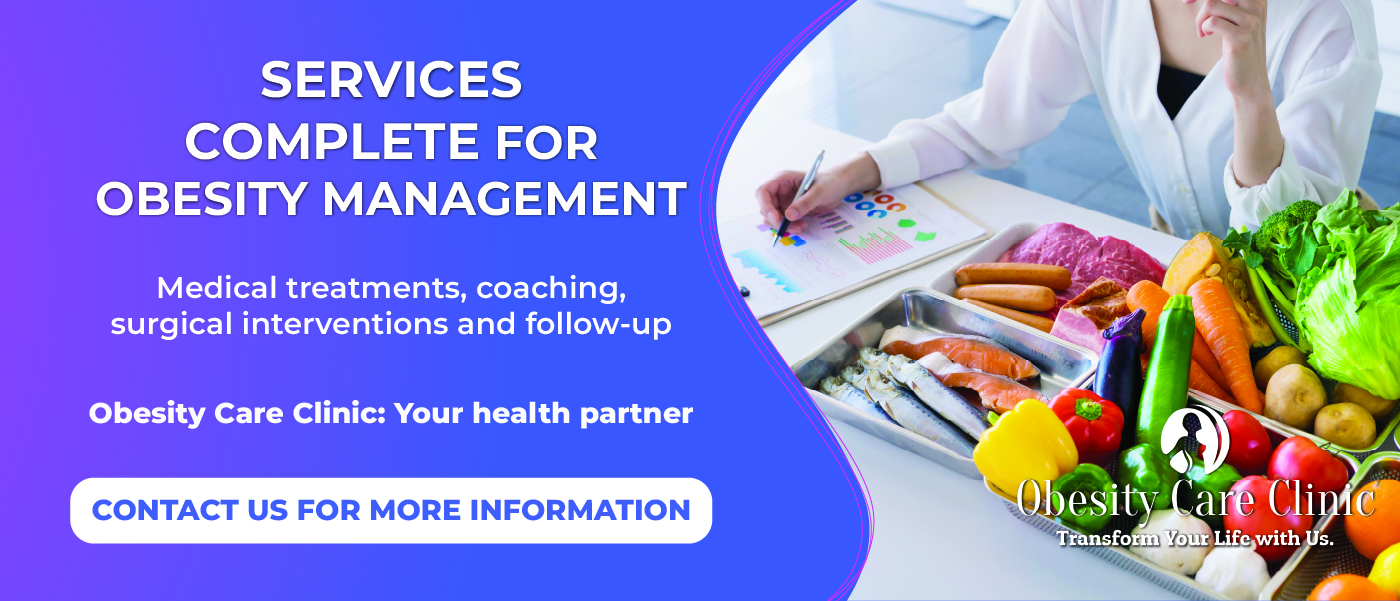Introduction
The consumption of processed foods has increased dramatically in recent decades, and it is widely acknowledged that such foods contribute significantly to the obesity epidemic [1]. According to the World Health Organization, obesity has reached epidemic proportions globally, with more than 1.9 billion adults being overweight and over 650 million being obese [2]. The connection between processed foods and obesity is multifaceted and complex, and it is important to understand the various factors that contribute to this relationship.
What are Processed Foods?
Processed foods refer to foods that have undergone various processing steps, including adding preservatives, artificial flavors, and colors, and refining grains [3]. These foods are typically high in calories, unhealthy fats, sugar, and salt, and low in essential nutrients [4]. Such characteristics make processed foods highly palatable, which can lead to overconsumption and weight gain [5].
Obesity is a complex condition that is caused by a combination of genetic, environmental, and lifestyle factors [6]. The consumption of processed foods is one of the environmental factors that contribute to the development of obesity [7]. Processed foods are often more affordable, accessible, and convenient than whole, unprocessed foods, which makes them an attractive choice for many people [8]. Additionally, processed foods are heavily marketed, which can influence consumer choices and contribute to their overconsumption [9].
In this article, we will explore the connection between processed foods and obesity in more detail. We will examine the various factors that contribute to this relationship, including the high calorie and low nutrient content of processed foods, the lack of satiety they provide, and the influence of advertising and accessibility on consumer behavior. We will also discuss strategies for reducing the consumption of processed foods, including reading food labels, choosing whole foods, and preparing meals at home. By understanding the complex relationship between processed foods and obesity, we can take steps to make healthier food choices and reduce the risk of obesity-related health problems.
What are Processed Foods?
Processed foods are ubiquitous in today’s modern food environment and have become a staple in many people’s diets [1]. These foods undergo various processing steps, including adding preservatives, artificial flavors, and colors, and refining grains [2]. As a result, they are often highly palatable, affordable, and convenient, making them an attractive choice for many consumers [3]. However, processed foods have been linked to a range of health problems, including obesity, heart disease, and diabetes [4].
Processed foods can be broadly categorized into four main groups: (1) convenience foods, (2) snack foods, (3) ready-to-eat meals, and (4) beverages [5]. Convenience foods include products such as frozen dinners, canned soups, and instant noodles, which are designed to be quick and easy to prepare. Snack foods, such as chips, crackers, and candy, are often high in calories, sugar, and salt and are designed to be eaten on the go. Ready-to-eat meals, such as pizza, sandwiches, and burgers, are often high in calories, unhealthy fats, and salt, and are typically consumed as a quick and convenient meal option. Beverages, including soft drinks, sports drinks, and energy drinks, are often high in sugar and calories and provide little nutritional value.
Palatability of Processed Foods
One of the main reasons why processed foods are so popular is that they are often highly palatable due to their high sugar, fat, and salt content [6]. Palatability refers to the hedonic experience of eating and can be influenced by the sensory properties of food, including taste, texture, and smell [7]. Processed foods are designed to be highly palatable and often contain added sugars, fats, and salt to enhance their flavor and appeal [8].
Processed foods are also often cheaper and more accessible than whole, unprocessed foods [9]. In many cases, they are more affordable due to economies of scale in production and distribution, as well as government subsidies for certain crops [10]. Additionally, processed foods are often widely available and can be found in most grocery stores and convenience stores [11].
However, despite their convenience and affordability, processed foods have been linked to a range of health problems, including obesity, heart disease, and diabetes [12]. These health problems are thought to be related to the high calorie and low nutrient content of processed foods [13]. Many processed foods are high in calories but provide little nutritional value, which can lead to overconsumption and weight gain [14]. Additionally, processed foods are often low in fiber, vitamins, and minerals, which are essential for maintaining good health [15].
In conclusion, processed foods are a common feature of the modern food environment and are often highly palatable, convenient, and affordable. However, they are also associated with a range of health problems, including obesity, heart disease, and diabetes. Understanding the characteristics of processed foods and their effects on health is important for making informed food choices and reducing the risk of these health problems.
What is Obesity?
Obesity is a major public health issue that has reached epidemic proportions globally. The World Health Organization defines obesity as “abnormal or excessive fat accumulation that may impair health” [1]. Obesity is a complex condition that is caused by a combination of genetic, environmental, and lifestyle factors [2]. It is a significant risk factor for a range of health problems, including heart disease, stroke, diabetes, and certain cancers [3].
Body mass index (BMI) is commonly used to classify individuals as underweight, normal weight, overweight, or obese. BMI is calculated by dividing a person’s weight in kilograms by their height in meters squared. A BMI of 25 to 29.9 is classified as overweight, while a BMI of 30 or higher is classified as obese [4]. However, BMI is not always an accurate measure of body fat, as it does not take into account factors such as muscle mass, bone density, and overall body composition [5].
Obesity is caused by a combination of genetic and environmental factors. Several genes have been identified that are associated with obesity, including genes involved in appetite regulation and energy metabolism [6]. However, genetic factors alone cannot explain the high rates of obesity seen in modern societies. Environmental factors, such as the availability and accessibility of high-calorie, low-nutrient foods, sedentary lifestyles, and stress, also play a significant role in the development of obesity [7].
Obesity as a Risk Factor
The effects of obesity on health are significant and wide-ranging. Obesity is a major risk factor for heart disease, the leading cause of death globally [8]. It also increases the risk of stroke, diabetes, and certain cancers, including breast, colon, and prostate cancer [9]. Additionally, obesity can lead to a range of other health problems, including sleep apnea, osteoarthritis, and infertility [10].
The economic burden of obesity is also significant. Obesity-related healthcare costs are estimated to be billions of dollars each year, with the costs of obesity-related illnesses accounting for a significant portion of these costs [11]. Additionally, obesity can lead to reduced productivity and increased absenteeism from work, further contributing to the economic burden of the condition [12].
In conclusion, obesity is a significant public health issue that is caused by a combination of genetic, environmental, and lifestyle factors. It is associated with a range of health problems, including heart disease, stroke, diabetes, and certain cancers, and is a significant economic burden. Understanding the causes and effects of obesity is essential for developing effective prevention and treatment strategies.
The Link Between Processed Foods and Obesity
The link between processed foods and obesity is multifaceted and complex. Processed foods are typically high in calories, unhealthy fats, sugar, and salt, and low in essential nutrients [1]. These characteristics make processed foods highly palatable, which can lead to overconsumption and weight gain [2]. Additionally, processed foods are often more affordable, accessible, and convenient than whole, unprocessed foods, which makes them an attractive choice for many people [3]. As a result, processed foods have been identified as a significant contributor to the obesity epidemic [4].
One of the main reasons why processed foods are linked to obesity is their high calorie content. Processed foods are often high in calories but provide little nutritional value, which can lead to overconsumption and weight gain [5]. Additionally, processed foods are often low in fiber, which can make them less satiating and lead to overeating [6]. This can lead to a cycle of overeating and weight gain, which can be difficult to break.
High Sugar/Fat Content
Another reason why processed foods are linked to obesity is their high sugar and fat content. Processed foods are often loaded with added sugars, which can lead to a rapid increase in blood sugar levels and a subsequent crash, which can lead to cravings for more sugar [7]. Additionally, processed foods are often high in unhealthy fats, such as trans fats and saturated fats, which have been linked to increased risk of heart disease and obesity [8].
Processed foods are also often more accessible and convenient than whole, unprocessed foods. They are widely available in grocery stores, convenience stores, and vending machines, making them an easy option for people on the go [9]. Additionally, processed foods are often marketed aggressively, which can influence consumer choices and lead to overconsumption [10]. This can lead to a higher intake of calories, sugar, and unhealthy fats, which can contribute to weight gain and obesity.
The consumption of processed foods is also linked to other unhealthy behaviors, such as a sedentary lifestyle and a lack of physical activity [11]. Many processed foods are designed to be eaten quickly and easily, often in front of a screen or while doing other sedentary activities. This can lead to a lack of physical activity and a sedentary lifestyle, which is a significant risk factor for obesity and other health problems.
In conclusion, the link between processed foods and obesity is complex and multifaceted. Processed foods are often high in calories, sugar, and unhealthy fats, and low in essential nutrients and fiber. Additionally, processed foods are often more affordable, accessible, and convenient than whole, unprocessed foods, which can lead to overconsumption and weight gain. Understanding the link between processed foods and obesity is essential for developing effective prevention and treatment strategies.
Factors Contributing to the Connection
The link between processed foods and obesity is influenced by a range of factors. While processed foods are not the sole cause of obesity, they are a significant contributor to the problem. Several factors contribute to the link between processed foods and obesity, including the availability and affordability of processed foods, the role of food marketing, and the impact of food addiction.
One factor contributing to the link between processed foods and obesity is the availability and affordability of processed foods. Processed foods are often cheaper and more accessible than whole, unprocessed foods, particularly in low-income communities [1]. This can lead to a higher consumption of processed foods, which are often high in calories, sugar, and unhealthy fats. Additionally, processed foods are often designed to be addictive, which can make them difficult to resist [2].
Role of Food Marketing
Another factor contributing to the link between processed foods and obesity is the role of food marketing. Processed foods are often marketed aggressively, particularly to children and adolescents [3]. This can lead to higher consumption of processed foods and a subsequent increase in calorie intake. Additionally, the marketing of processed foods often focuses on taste and convenience, which can lead to a preference for these foods over healthier options.
The impact of food addiction is also a factor contributing to the link between processed foods and obesity. Some experts suggest that the addictive properties of processed foods contribute to overeating and obesity [4]. Highly processed foods are often designed to be hyperpalatable, which can lead to a cycle of overeating and weight gain. Additionally, the overconsumption of processed foods can lead to changes in the brain that make it difficult to control food intake, similar to the changes seen in drug addiction [5].
Sedentary lifestyles and a lack of physical activity are also contributing factors to the link between processed foods and obesity. The availability and convenience of processed foods can lead to a more sedentary lifestyle, as people spend more time sitting and less time engaging in physical activity. This can lead to a higher calorie intake and a subsequent increase in weight [6].
In conclusion, the link between processed foods and obesity is influenced by a range of factors, including the availability and affordability of processed foods, the role of food marketing, the impact of food addiction, and sedentary lifestyles. Understanding these factors is essential for developing effective prevention and treatment strategies for obesity.
Strategies for Reducing Processed Food Consumption
Reducing processed food consumption is essential for preventing and treating obesity. There are several strategies that can help individuals reduce their consumption of processed foods and promote a healthier diet. These strategies include increasing whole food intake, cooking meals at home, reading food labels, and avoiding fast food and convenience foods.
One strategy for reducing processed food consumption is to increase whole food intake. Whole foods, such as fruits, vegetables, whole grains, and lean proteins, are nutrient-dense and provide essential vitamins, minerals, and fiber. Eating more whole foods can help reduce the consumption of processed foods, which are often high in calories, sugar, and unhealthy fats.
Home Cooked Meals
Another strategy for reducing processed food consumption is to cook meals at home. Cooking at home allows individuals to control the ingredients in their meals and avoid the added sugars, unhealthy fats, and artificial additives often found in processed foods [1]. Meal planning and preparation can also help individuals save time and money while promoting a healthier diet.
Reading food labels is also an important strategy for reducing processed food consumption. Food labels provide valuable information about the nutrient content and ingredients of foods, which can help individuals make informed choices about the foods they consume [2]. When reading food labels, it is important to look for ingredients such as added sugars, unhealthy fats, and artificial additives, which are often found in processed foods.
Avoiding fast food and convenience foods is another strategy for reducing processed food consumption. Fast food and convenience foods are often high in calories, sodium, and unhealthy fats, and provide little nutritional value [3]. These foods are also often highly processed and loaded with added sugars and artificial additives, making them a significant contributor to the obesity epidemic.
Public Health Interventions
In addition to these strategies, several public health interventions can help reduce the consumption of processed foods and promote a healthier diet. These interventions include nutrition education, food subsidies for healthy foods, and regulations on food marketing to children [4]. Such interventions can help create an environment that supports healthy eating habits and reduces the availability and appeal of unhealthy foods.
In conclusion, reducing processed food consumption is essential for preventing and treating obesity. Strategies for reducing processed food consumption include increasing whole food intake, cooking meals at home, reading food labels, and avoiding fast food and convenience foods. These strategies, along with public health interventions, can help create an environment that supports healthy eating habits and reduces the prevalence of obesity.
Conclusion
In conclusion, the link between processed foods and obesity is a complex and multifaceted issue that requires attention and action from individuals, healthcare professionals, and policymakers. Processed foods are often high in calories, sugar, and unhealthy fats, and low in essential nutrients and fiber, which can lead to overconsumption and weight gain. Additionally, the availability, affordability, and marketing of processed foods make them an attractive choice for many individuals, particularly in low-income communities.
How to prevent and treat Obesity
Reducing processed food consumption is essential for preventing and treating obesity. Strategies for reducing processed food consumption include increasing whole food intake, cooking meals at home, reading food labels, and avoiding fast food and convenience foods. These strategies, along with public health interventions, can help create an environment that supports healthy eating habits and reduces the prevalence of obesity.
It is essential that individuals, healthcare professionals, and policymakers work together to address the link between processed foods and obesity. Education, regulation, and public health interventions can help individuals make informed choices about their diet and create an environment that promotes healthy eating habits. By taking action to reduce processed food consumption, we can improve the health and well-being of individuals and communities worldwide.
References
- Malik VS, Hu FB. Fast-Food and Full-Service Restaurant Consumption and Daily Energy and Nutrient Intakes in US Adults. JAMA Intern Med. 2013;173(13):1–9.
- World Health Organization. Obesity and overweight. Available from: (accessed on 22 April 2023).
- Hu FB. Globalization of food patterns and cardiovascular disease risk. Circulation. 2008;118(19):1913–4.
- Monteiro CA, Cannon G, Levy R, et al. Ultra-processed foods: what they are and how to identify them. Public Health Nutr. 2019;22(5):936-941.
- Drewnowski A. Taste preferences and food intake. Annu Rev Nutr. 1997;17:237–53.
- World Health Organization. Obesity: preventing and managing the global epidemic. Report of a WHO Consultation. World Health Organ Tech Rep Ser. 2000;894:i–xii, 1-253.
- Ludwig DS, Peterson KE, Gortmaker SL. Relation between consumption of sugar-sweetened drinks and childhood obesity: a prospective, observational analysis. Lancet. 2001;357(9255):505–8.
- Drewnowski A, Darmon N. The economics of obesity: dietary energy density and energy cost. Am J Clin Nutr. 2005;82(1):265S–73S.
- Harris JL, Pomeranz JL, Lobstein T, Brownell KD. A crisis in the marketplace: how food marketing contributes to childhood obesity and what can be done. Annu Rev Public Health.. 2002;287(18):2414-23.
- Poti JM, Mendez MA, Ng SW, et al. Is the degree of food processing and convenience linked with the nutritional quality of foods purchased by US households? Am J Clin Nutr. 2015;101(6):1251-62.
- Bellisle F. Meals and snacking, diet quality and energy balance. Physiol Behav. 2014;134:38-43.
- Finlayson G. Food addiction and obesity: unnecessary medicalization of hedonic overeating. Nat Rev Endocrinol. 2017;13(8):493-498.
- Gearhardt AN, Corbin WR, Brownell KD. Food addiction: an examination of the diagnostic criteria for dependence. J Addict Med. 2009;3(1):1-7.
- Drewnowski A. The cost of US foods as related to their nutritive value. Am J Clin Nutr. 2010;92(5):1181-8.
- Hawkes C. Uneven dietary development: linking the policies and processes of globalization with the nutrition transition, obesity and diet-related chronic diseases. Global Health. 2006;2:4.
- Caspi CE, Lenk K, Pelletier JE, et al. Association between proximity to and coverage of traditional fast-food restaurants and non-traditional fast-food outlets and fast-food consumption among rural adults. Int J Behav Nutr Phys Act. 2017;14(1):40.
- Fiolet T, Srour B, Sellem L, et al. Consumption of ultra-processed foods and cancer risk: results from NutriNet-Santé prospective cohort. BMJ. 2018;360:k322.
- Martinez Steele E, Popkin BM, Swinburn B, et al. The share of ultra-processed foods and the overall nutritional quality of diets in the US: evidence from a nationally representative cross-sectional study. Popul Health Metr. 2017;15(1):6.
- World Health Organization. Obesity: preventing and managing the global epidemic. Report of a WHO Consultation. World Health Organ Tech Rep Ser. 2000;894:i–xii, 1-253.
- Pi-Sunyer FX. Obesity: definitions, epidemiology, and etiology. In: Feingold KR, Anawalt B, Boyce A, et al., editors. Endotext [Internet]. South Dartmouth (MA): MDText.com, Inc.; 2000-2022.




